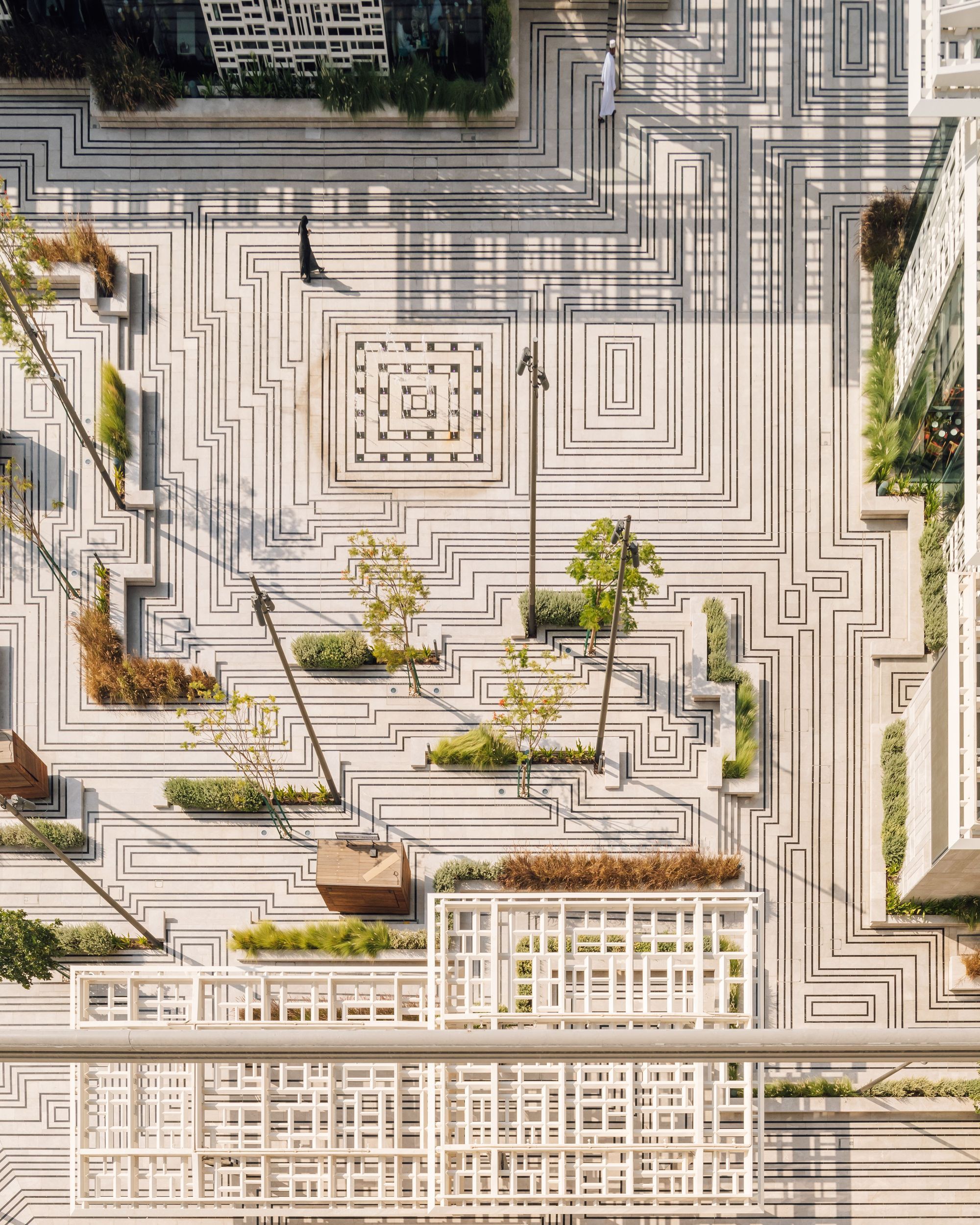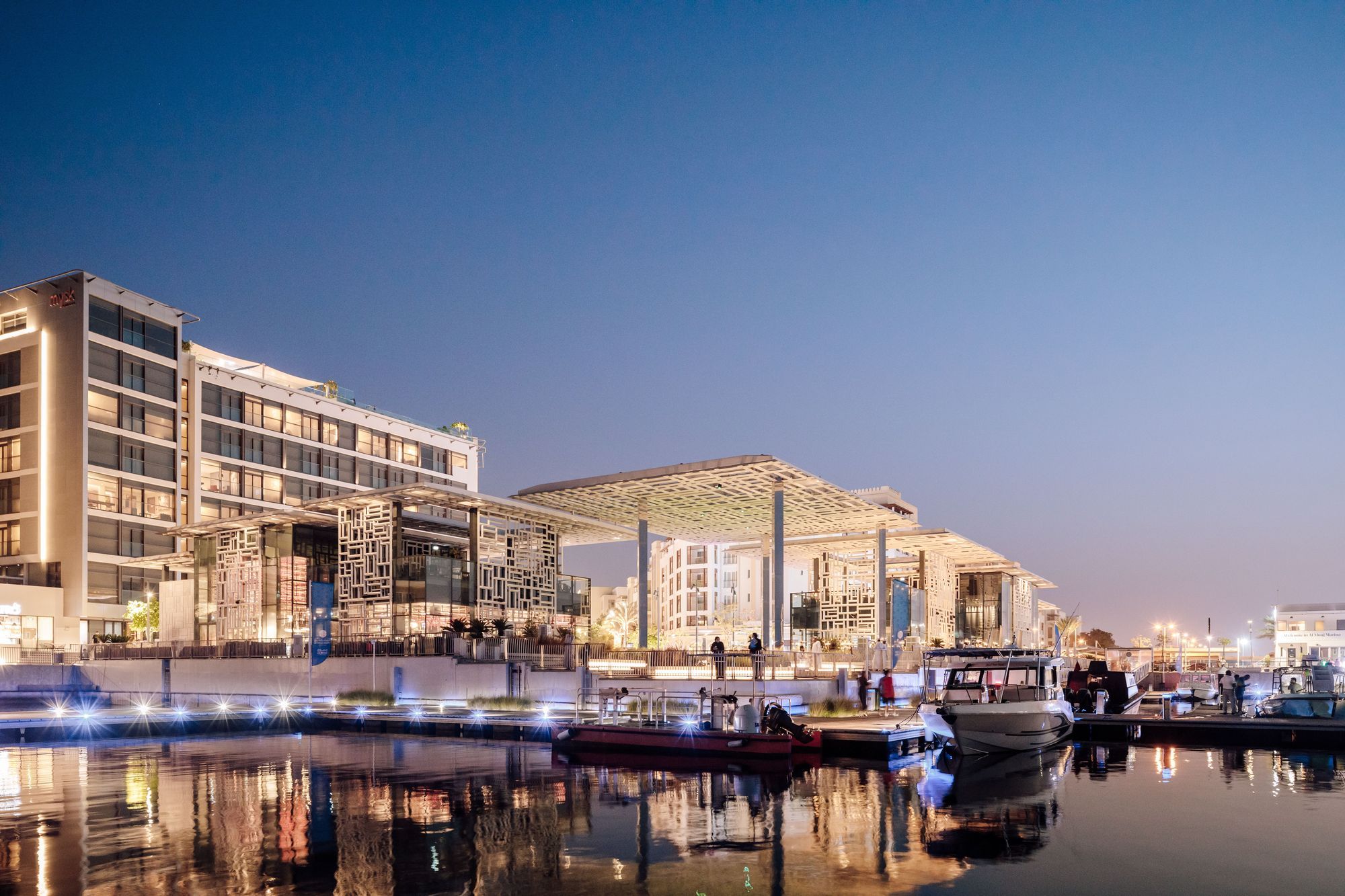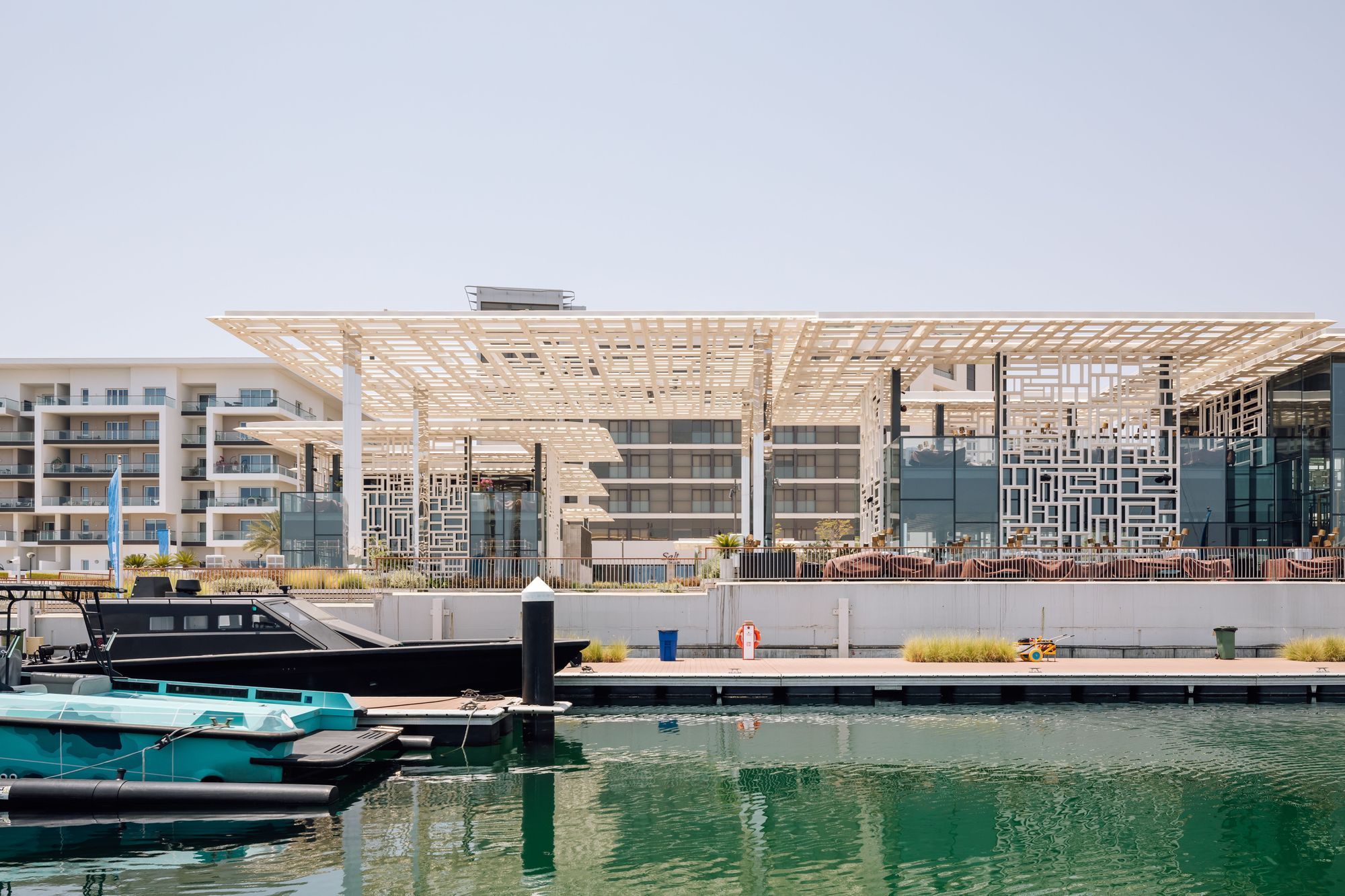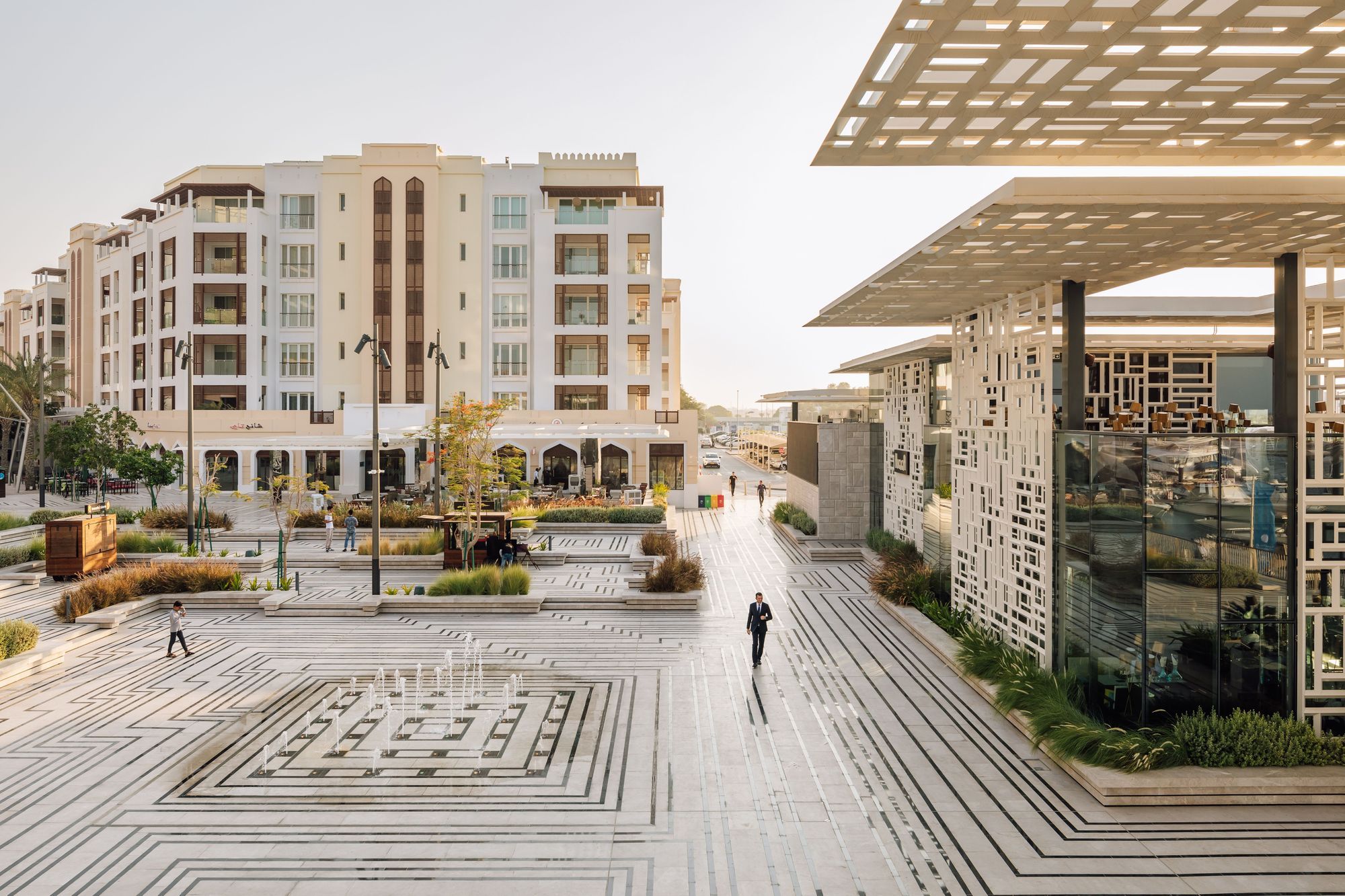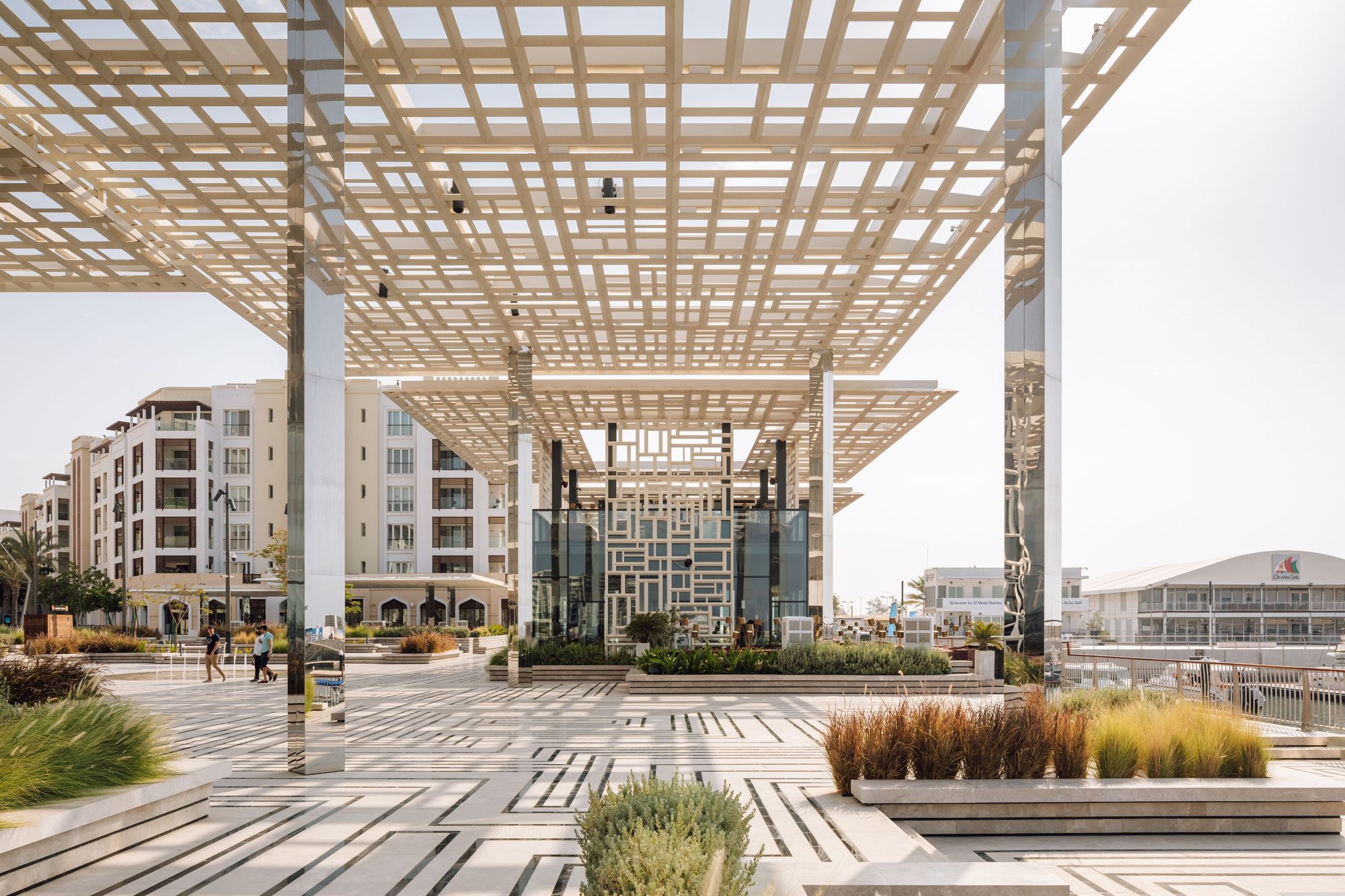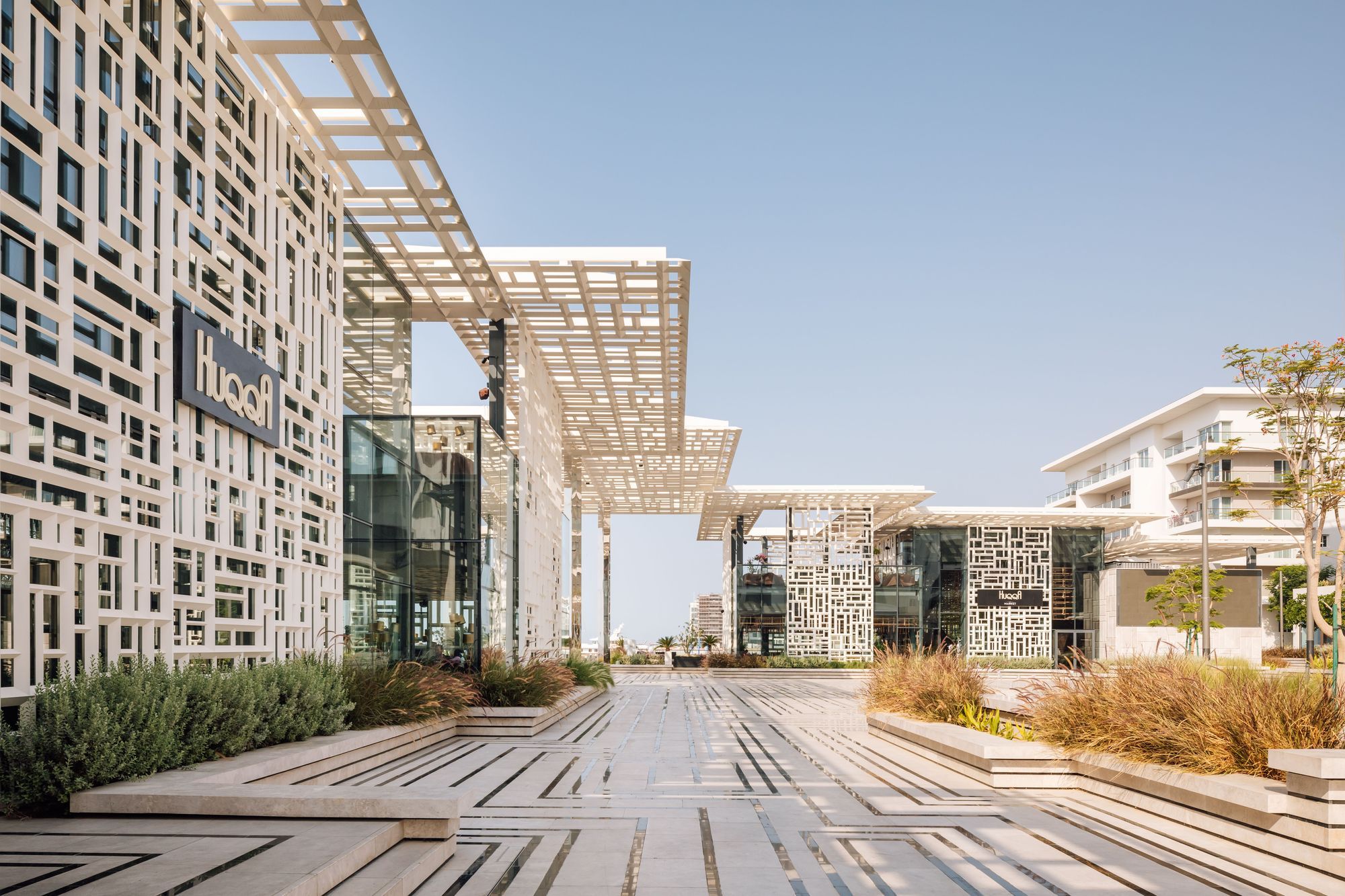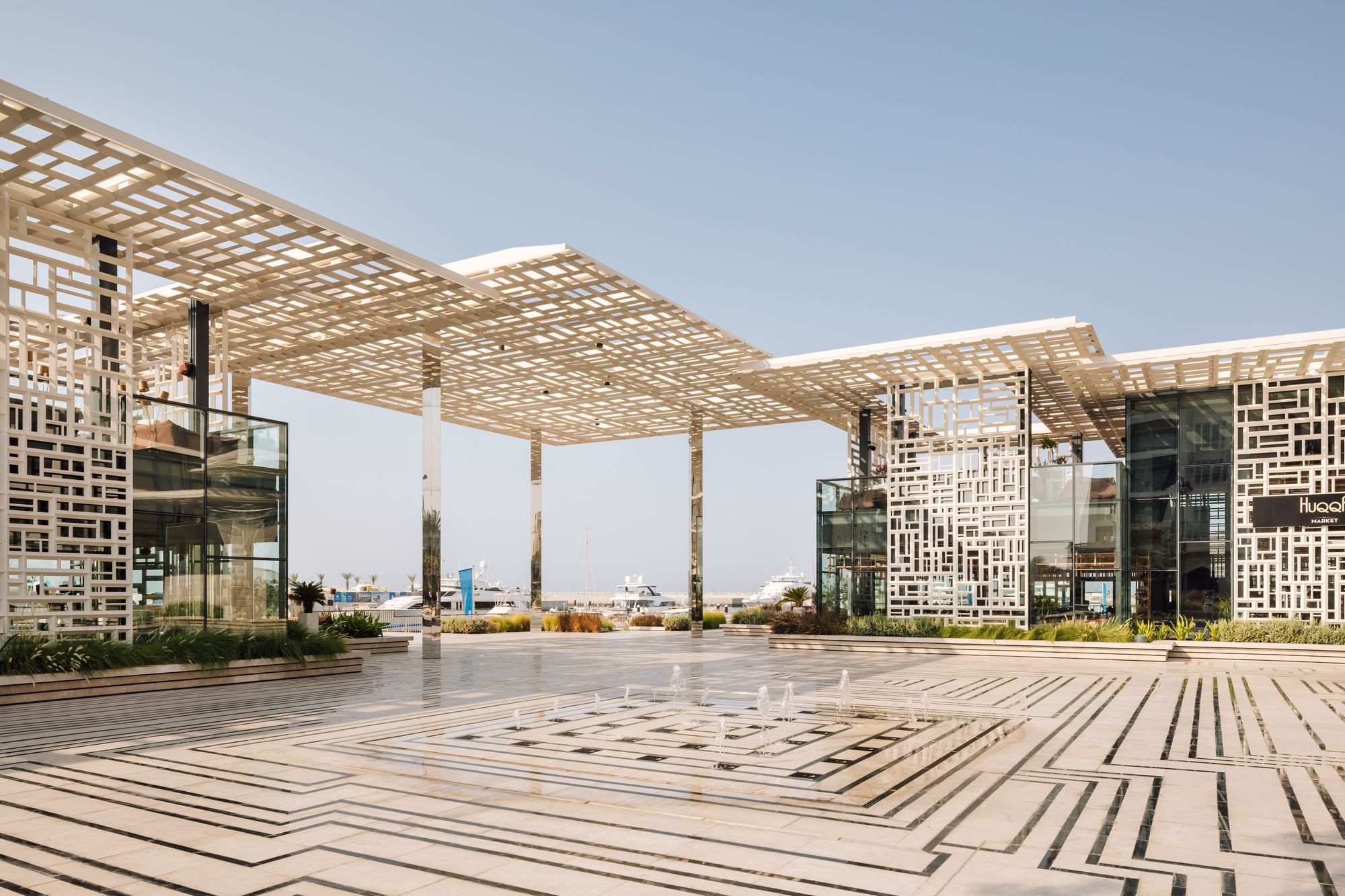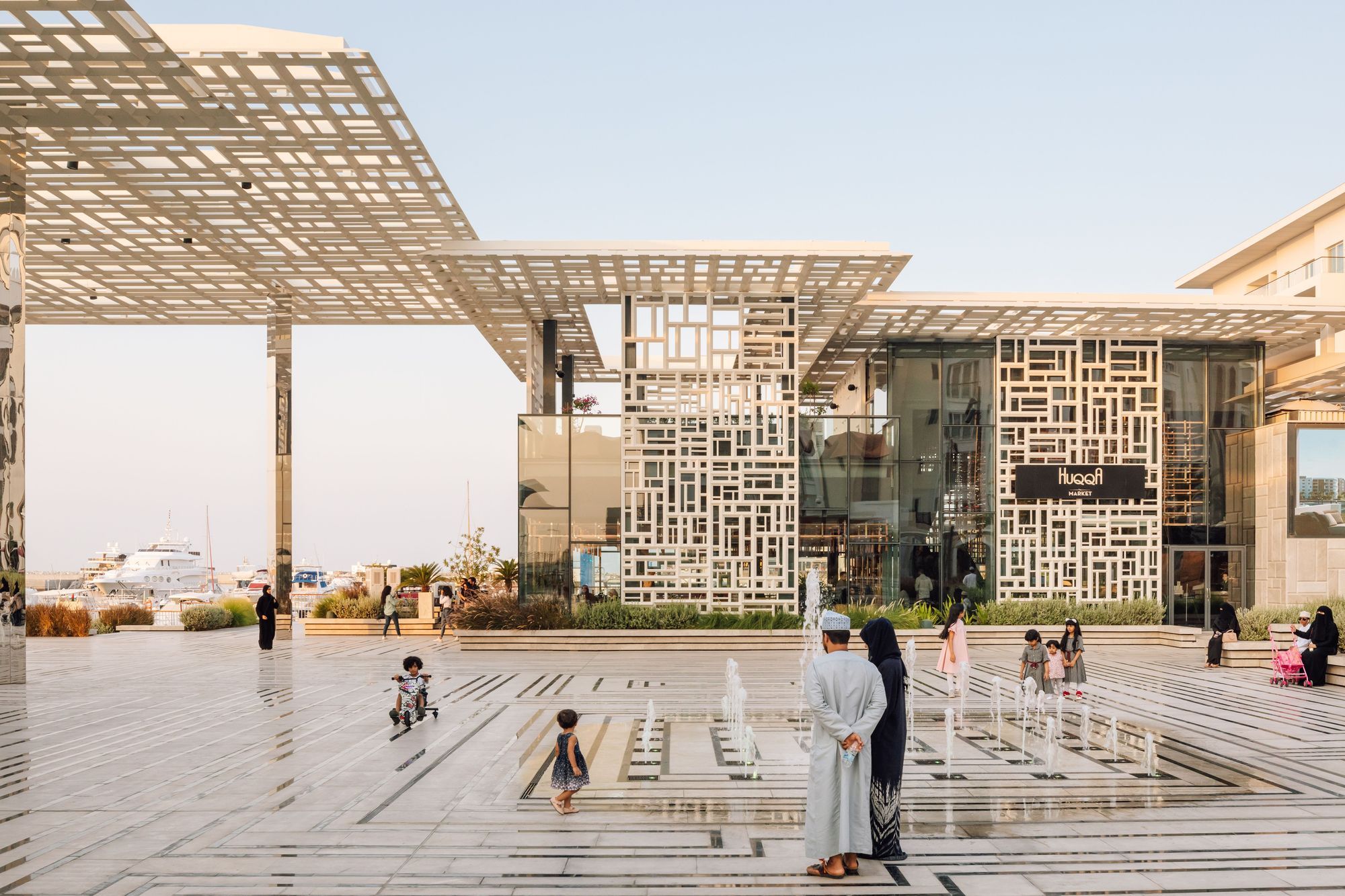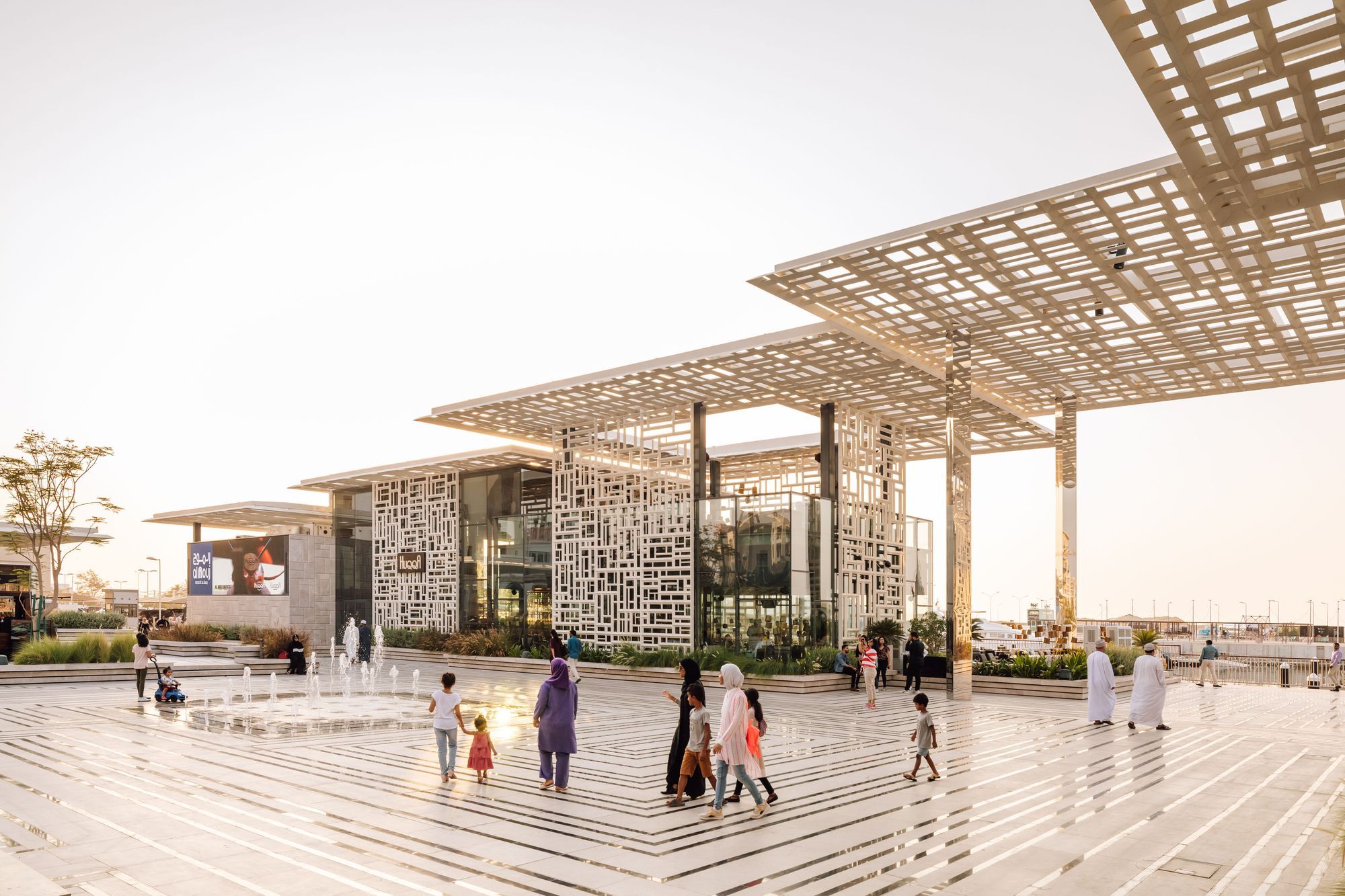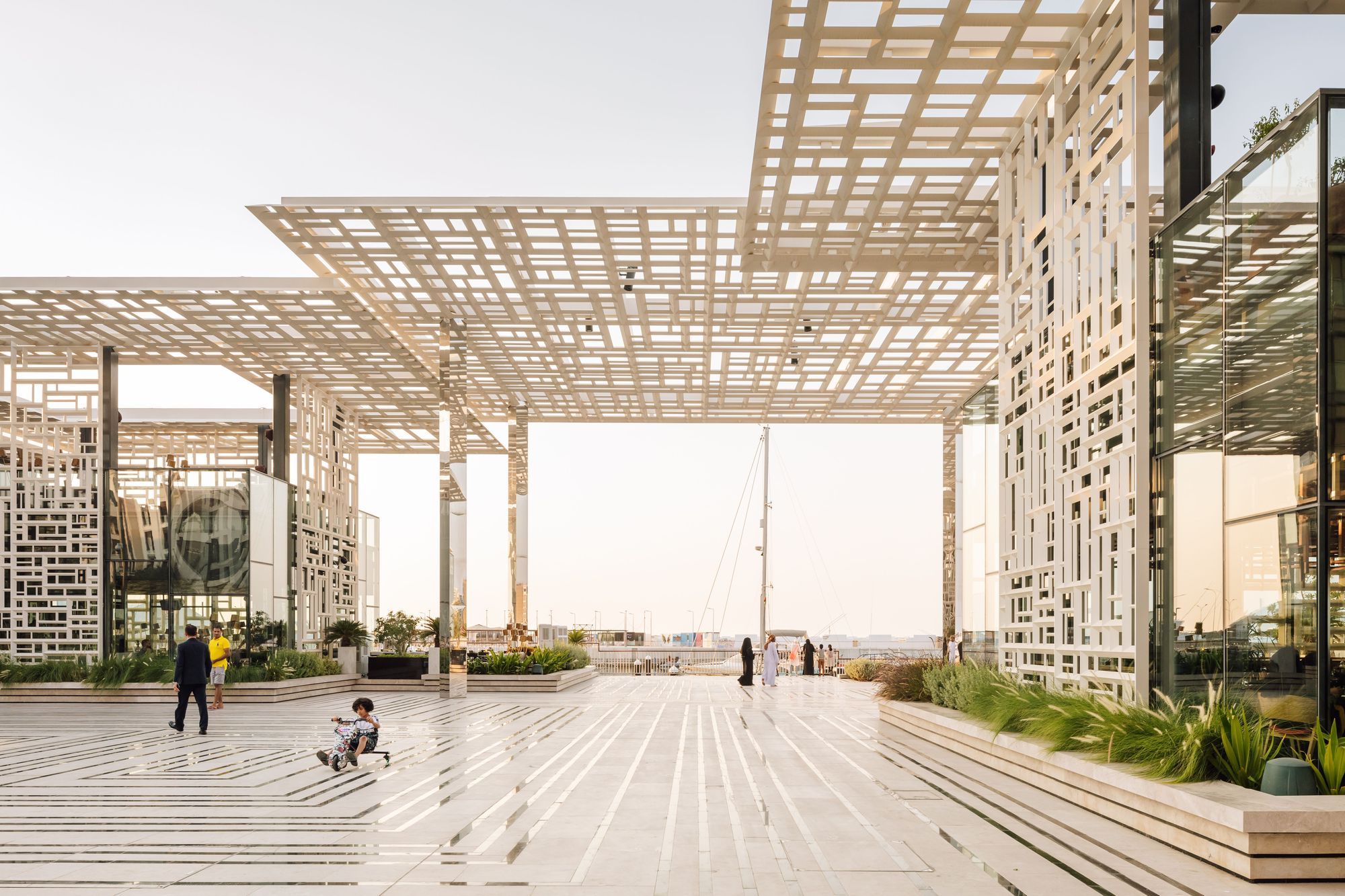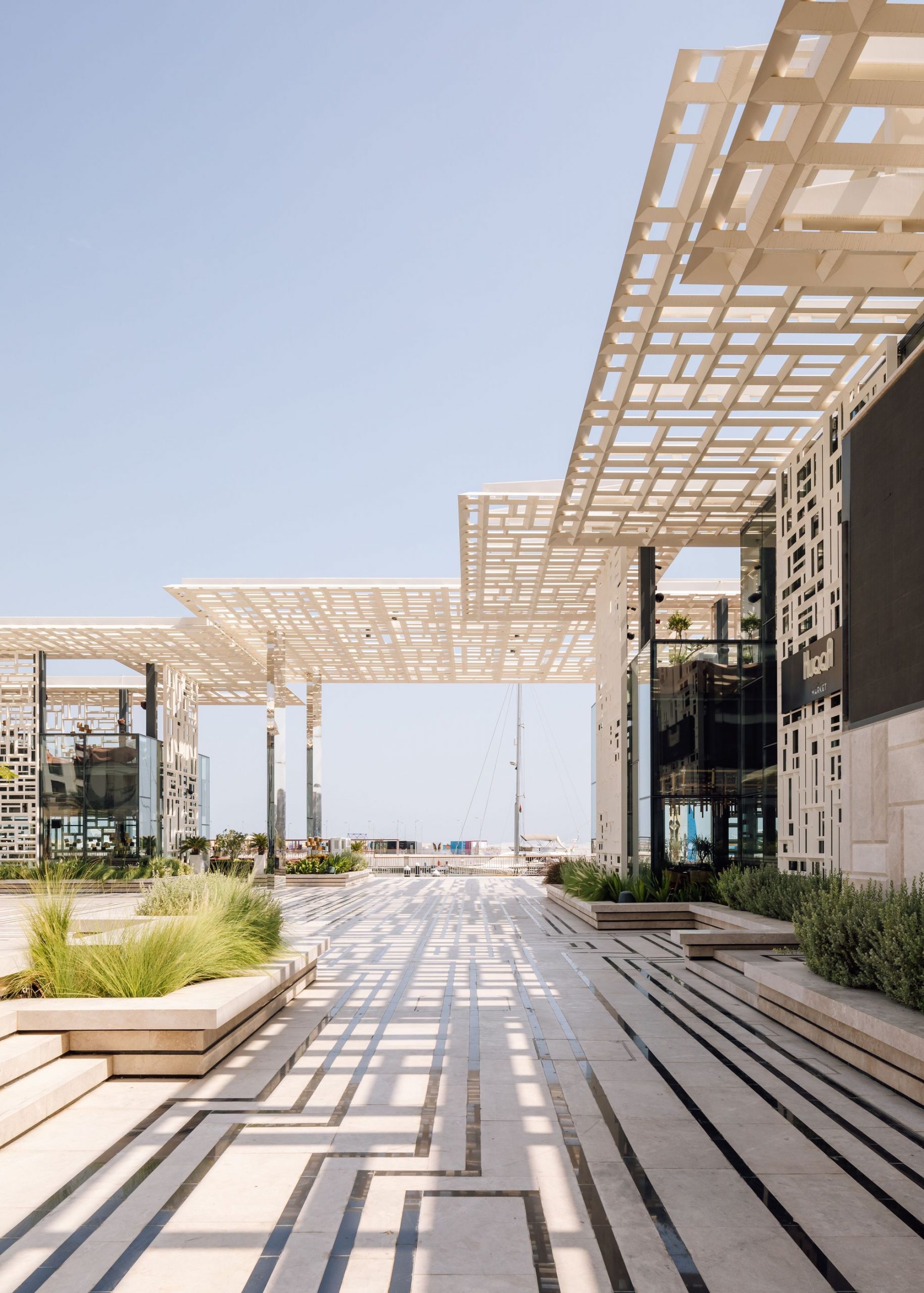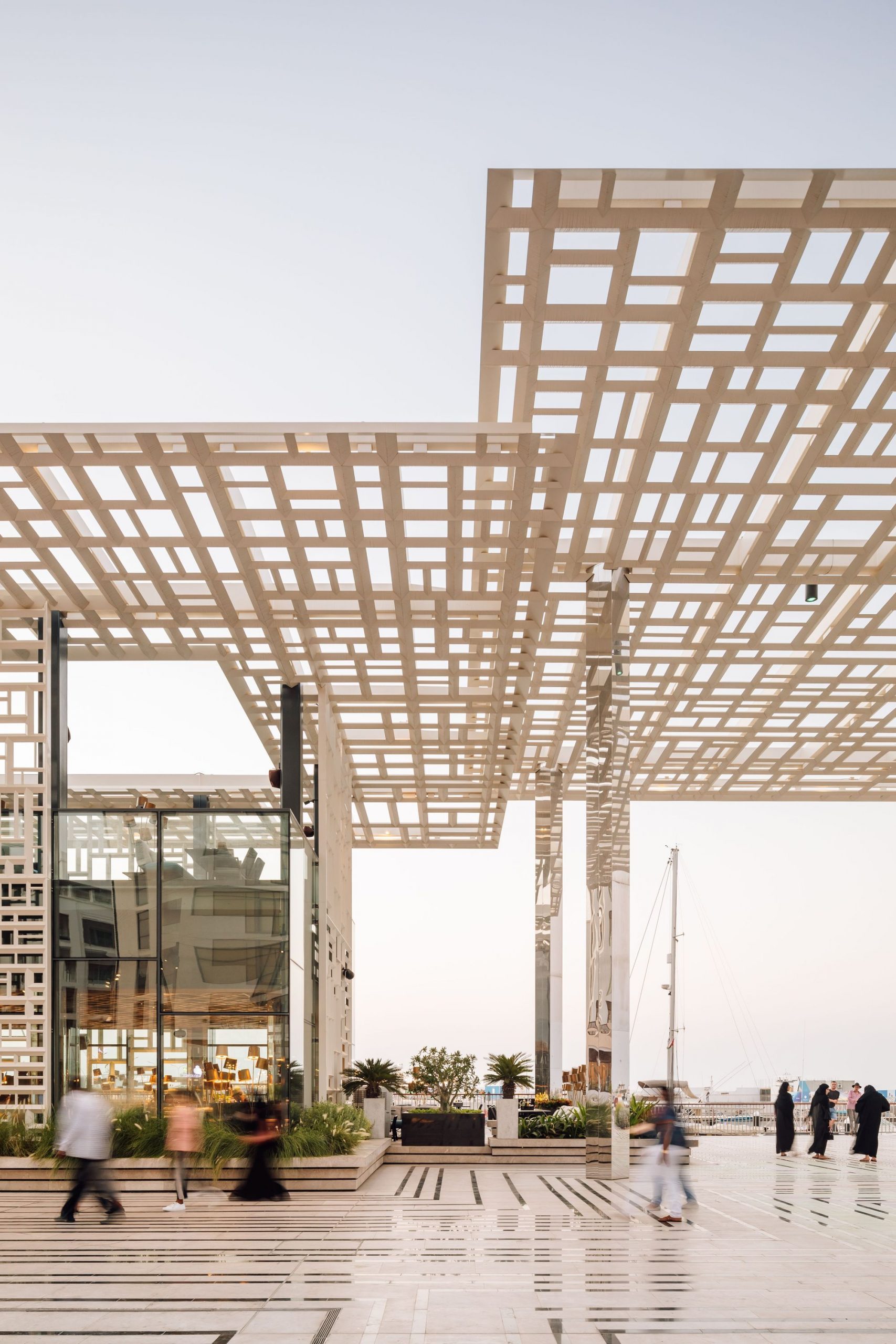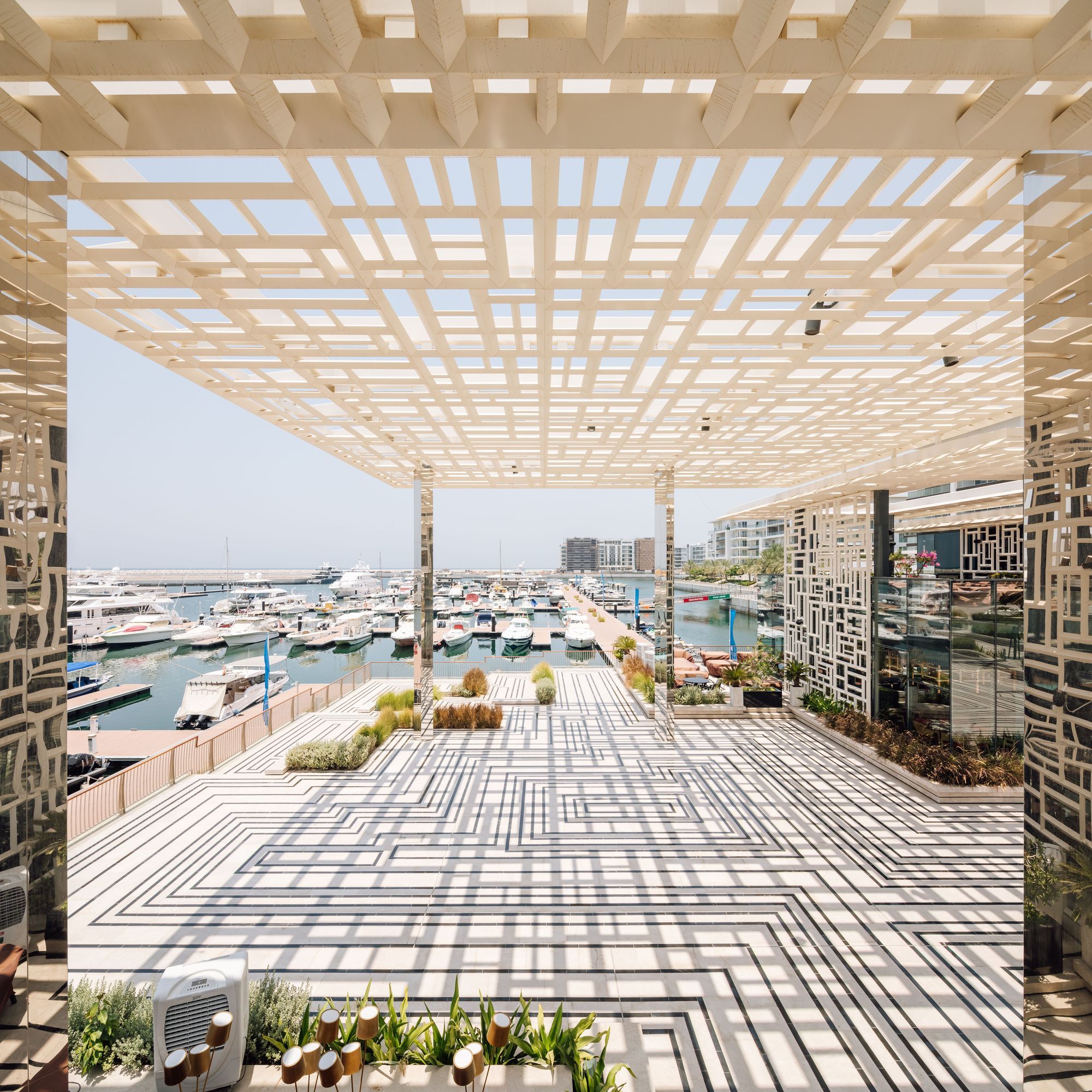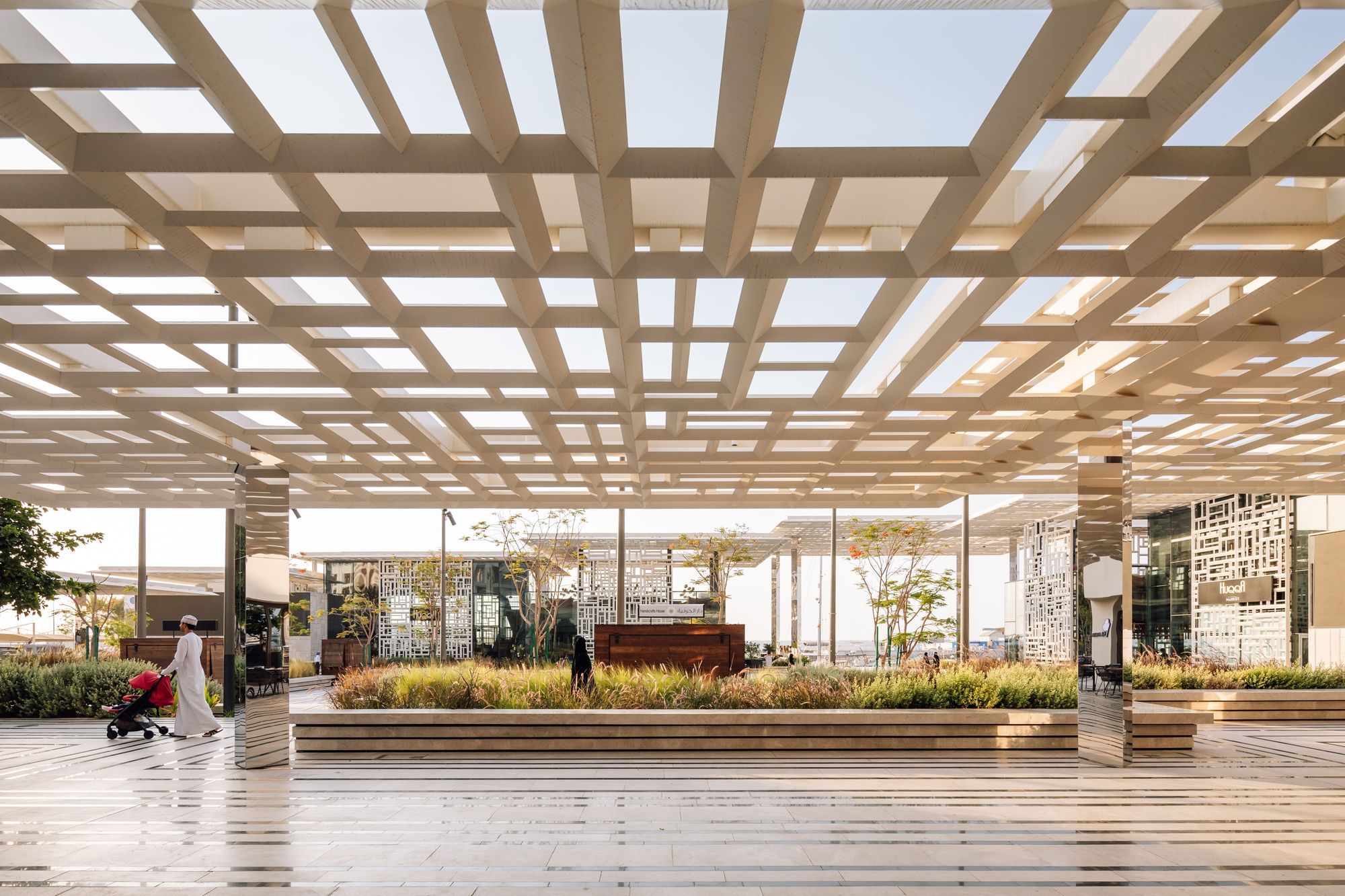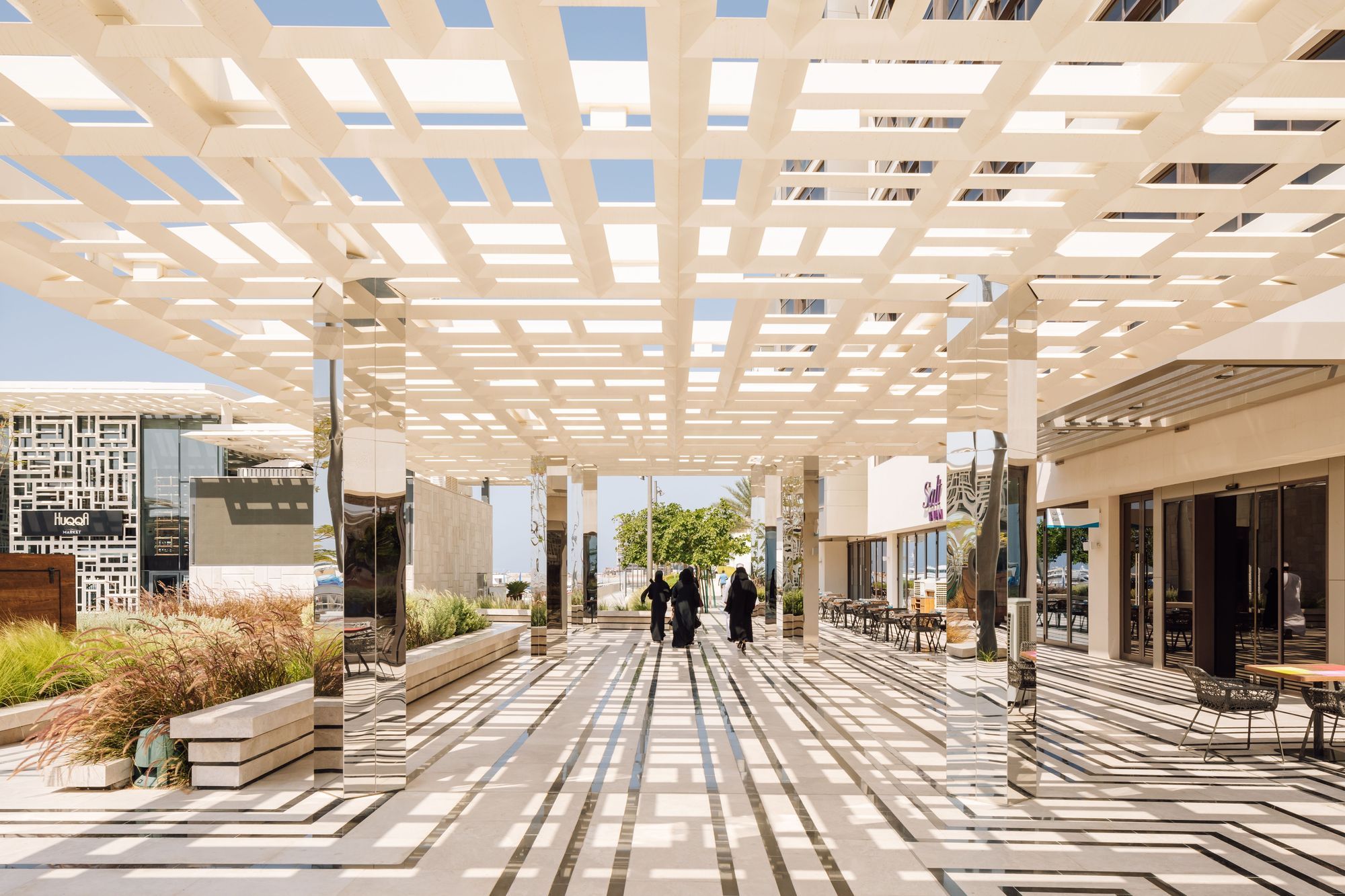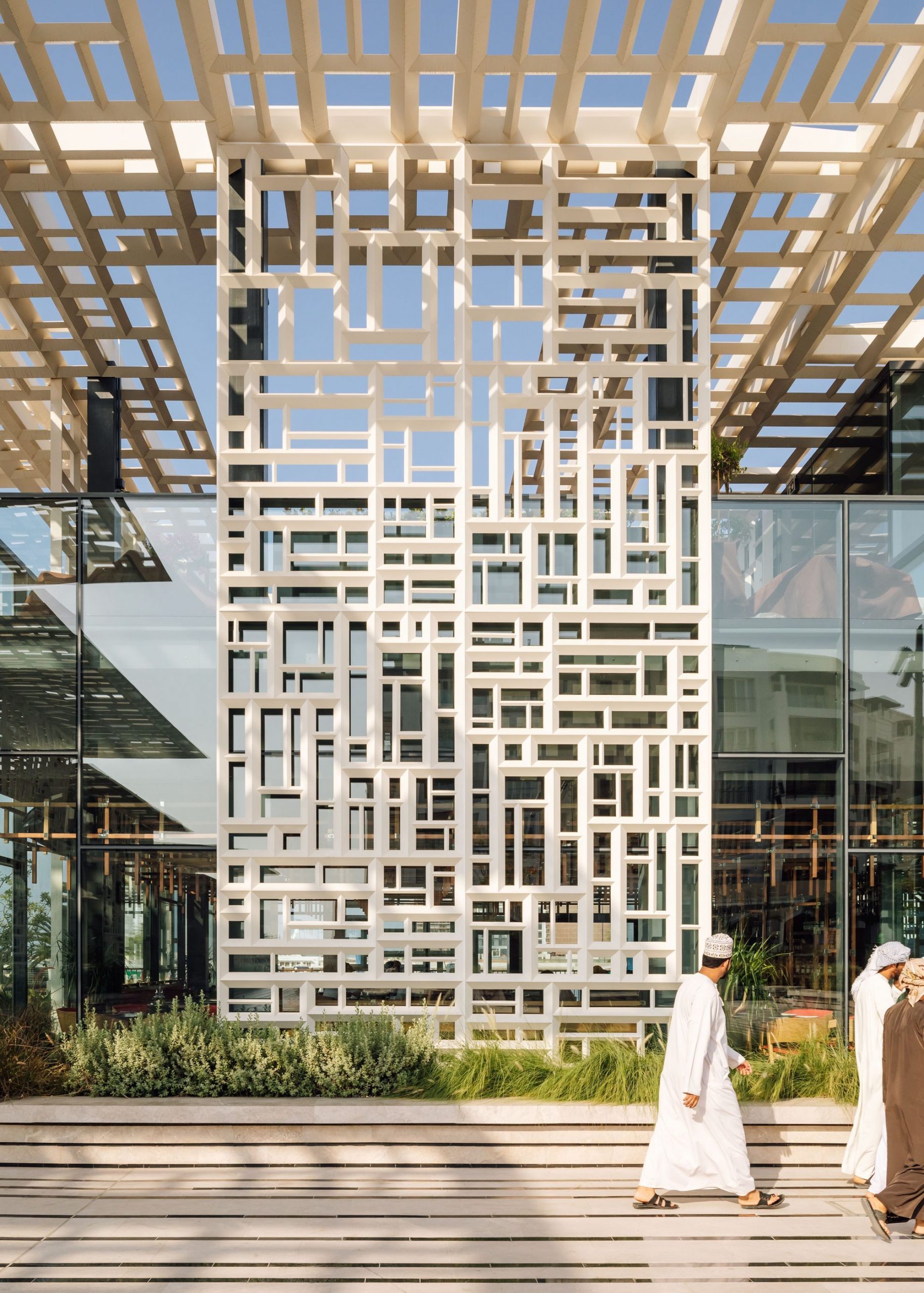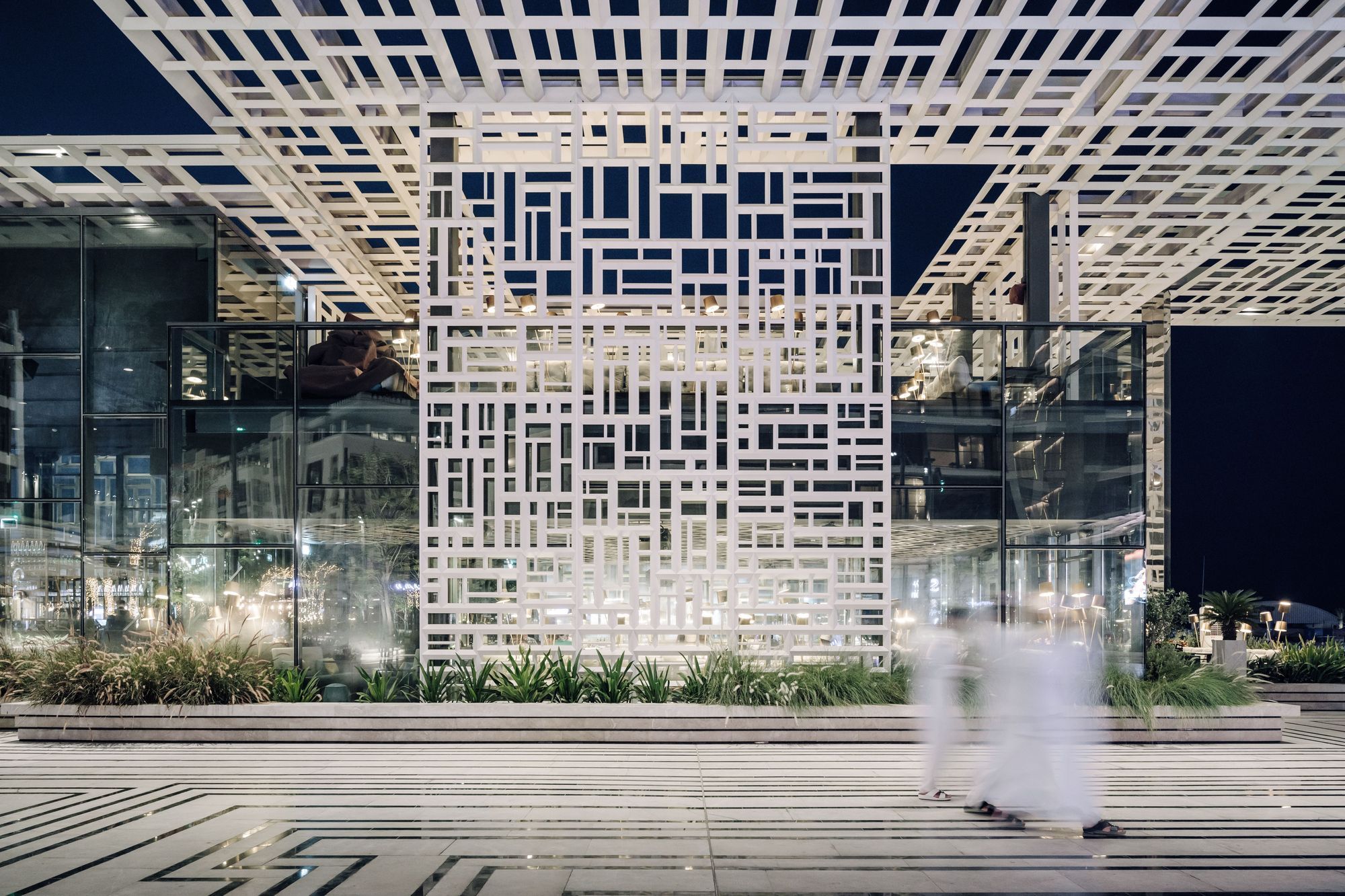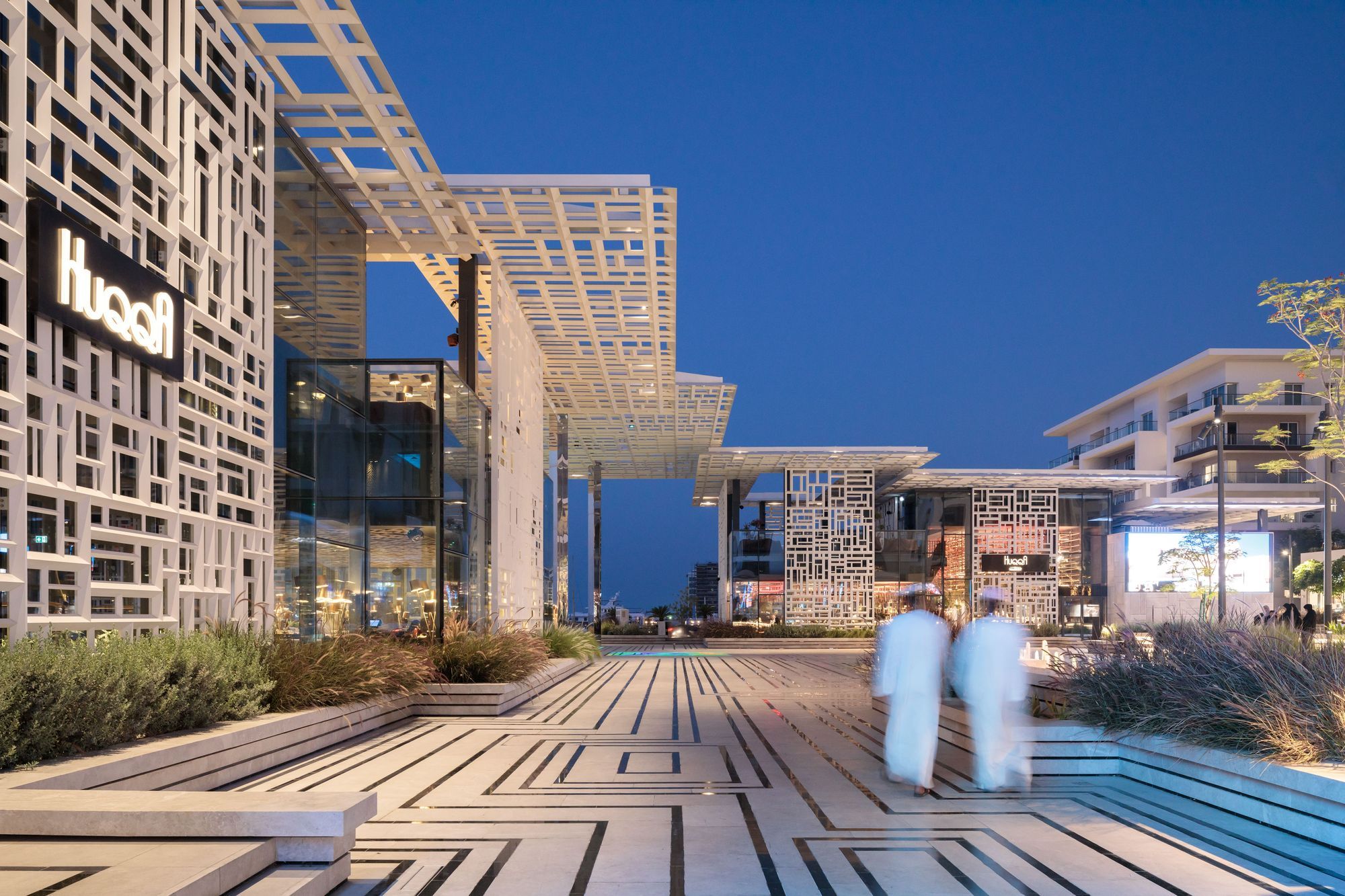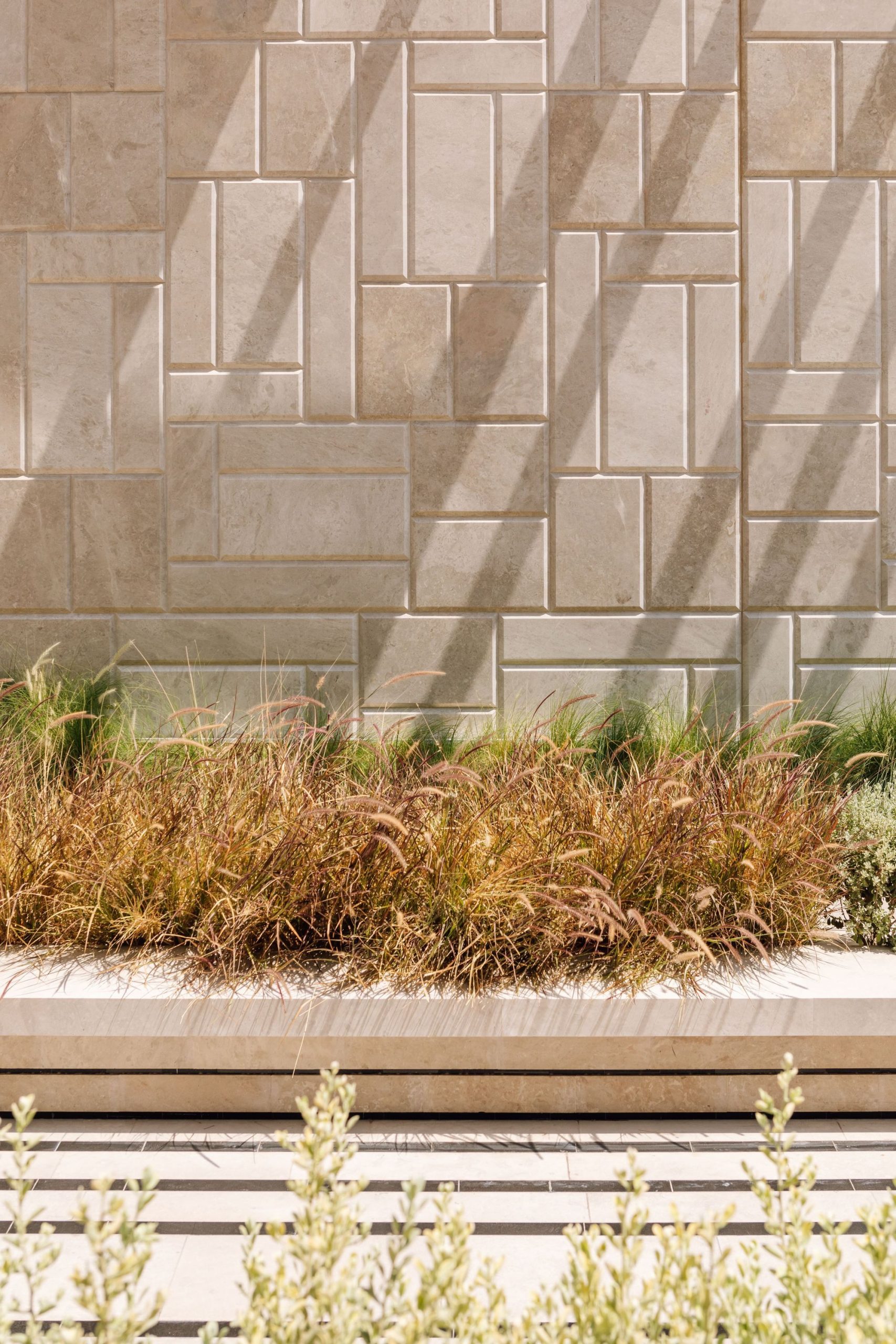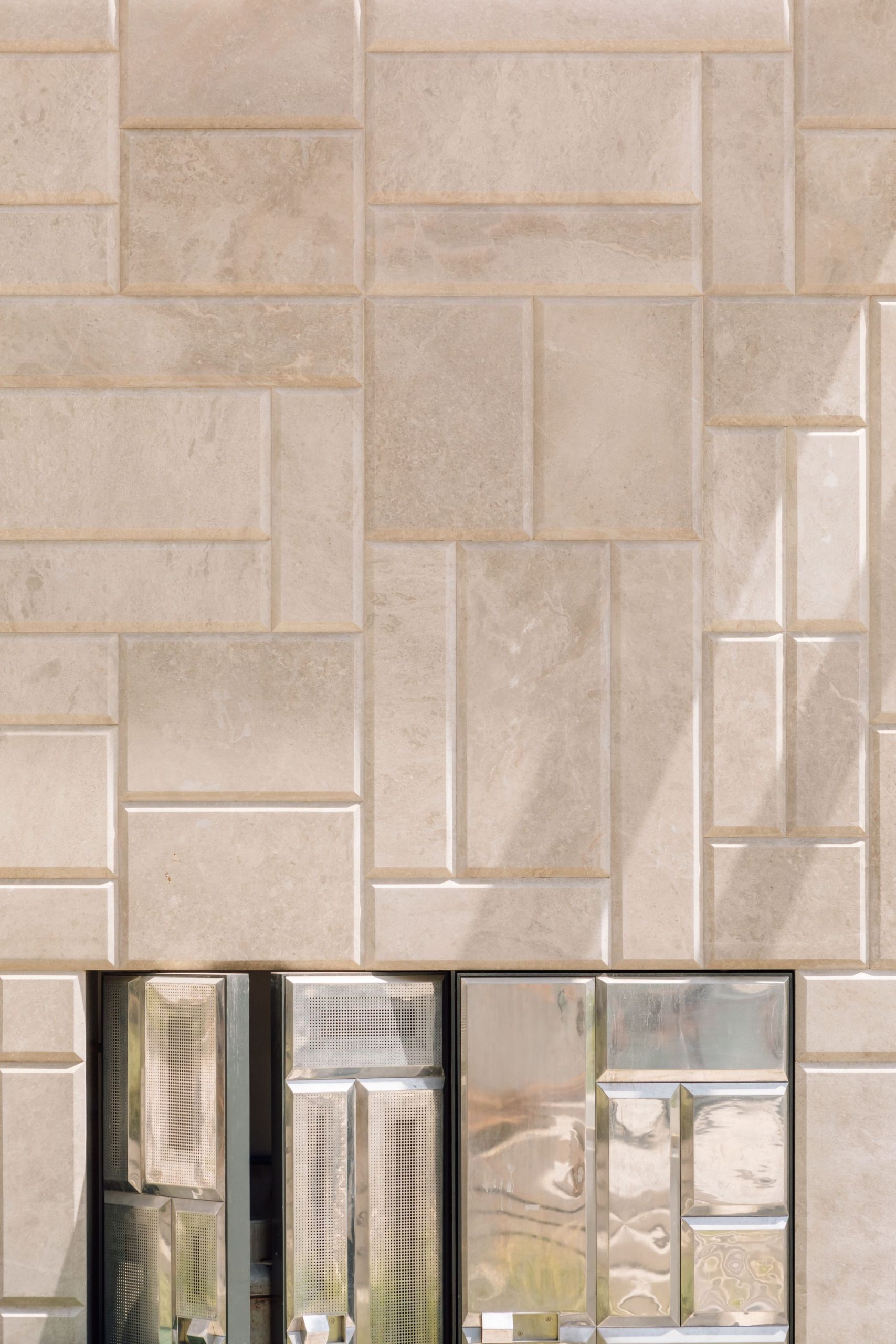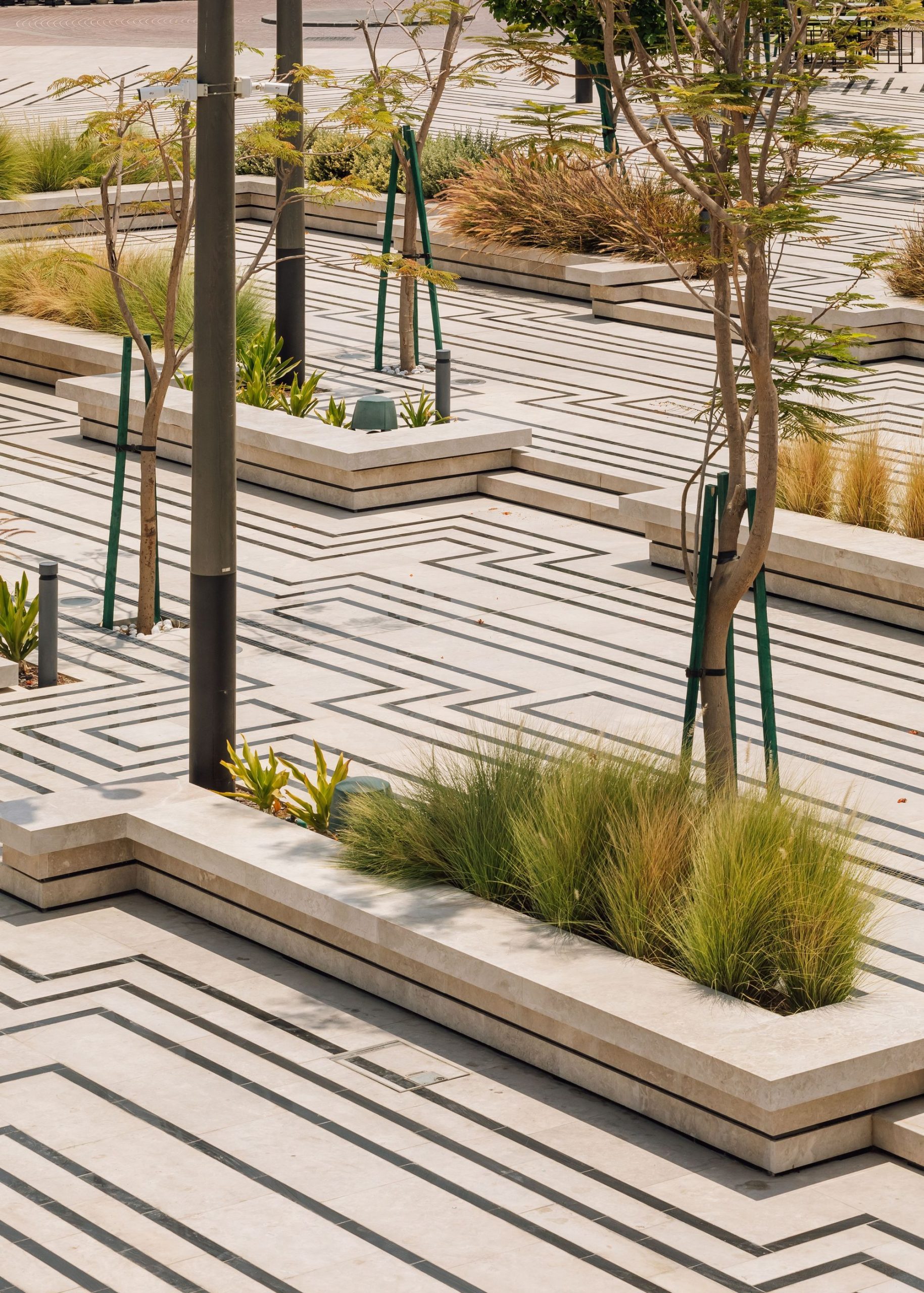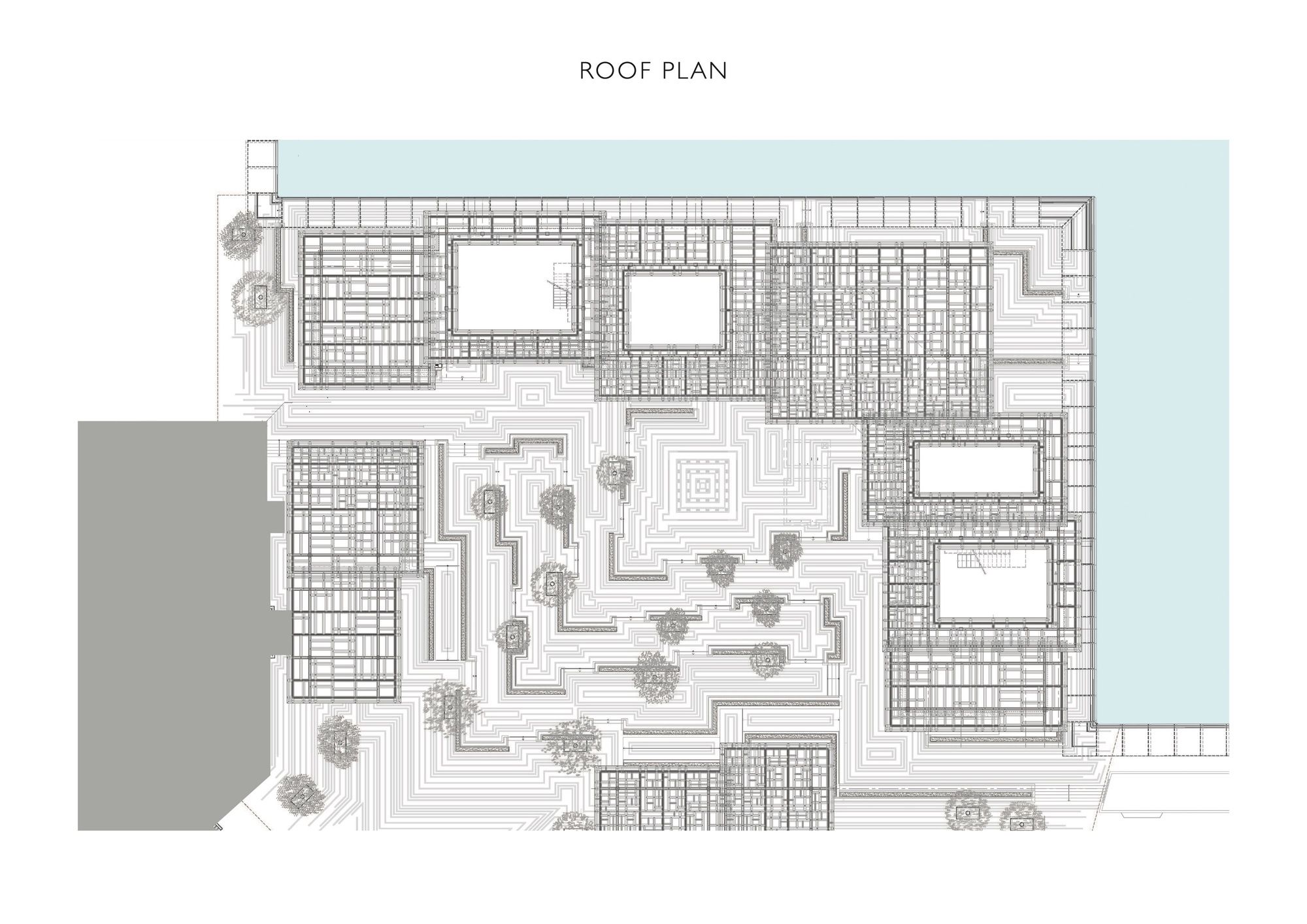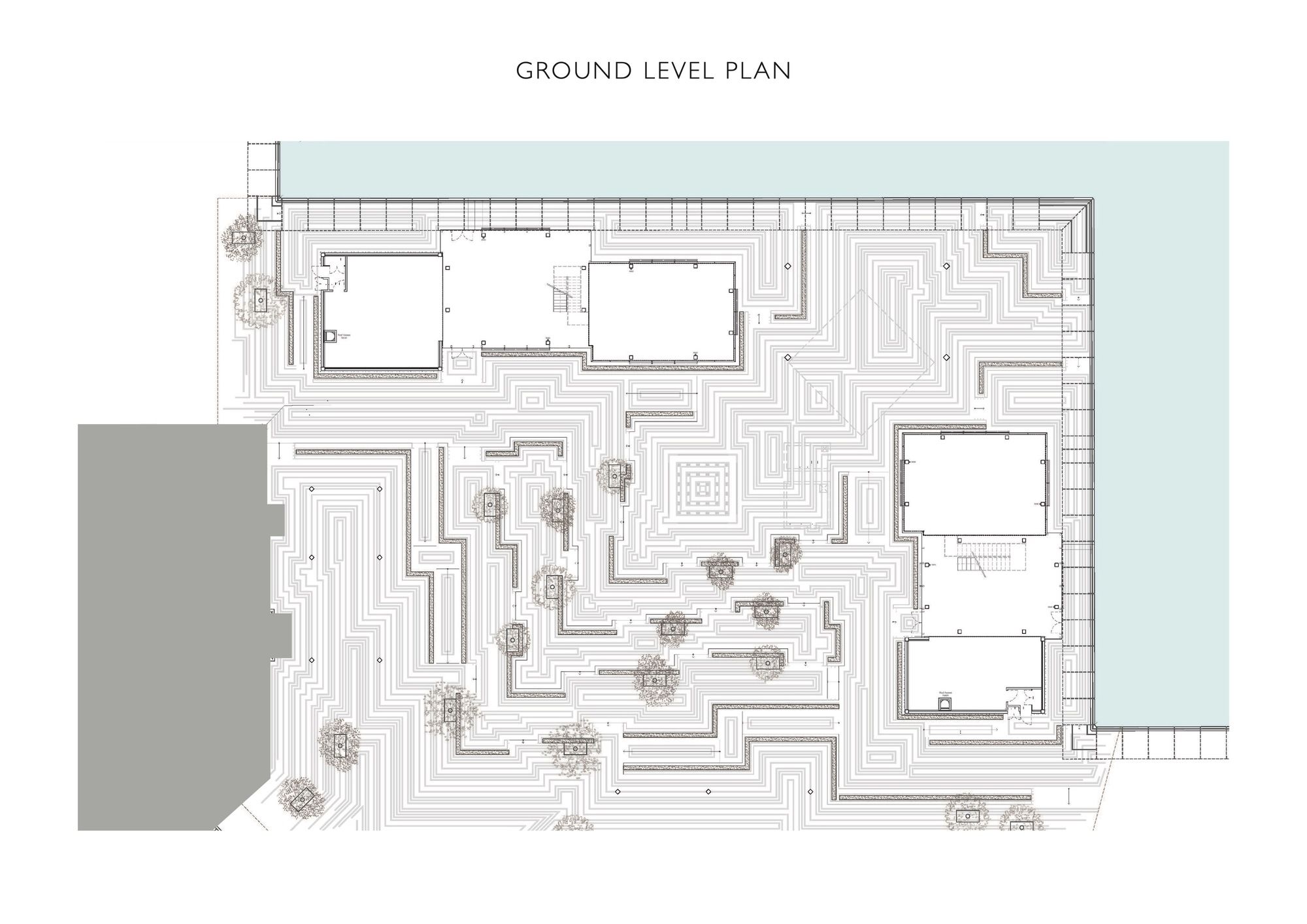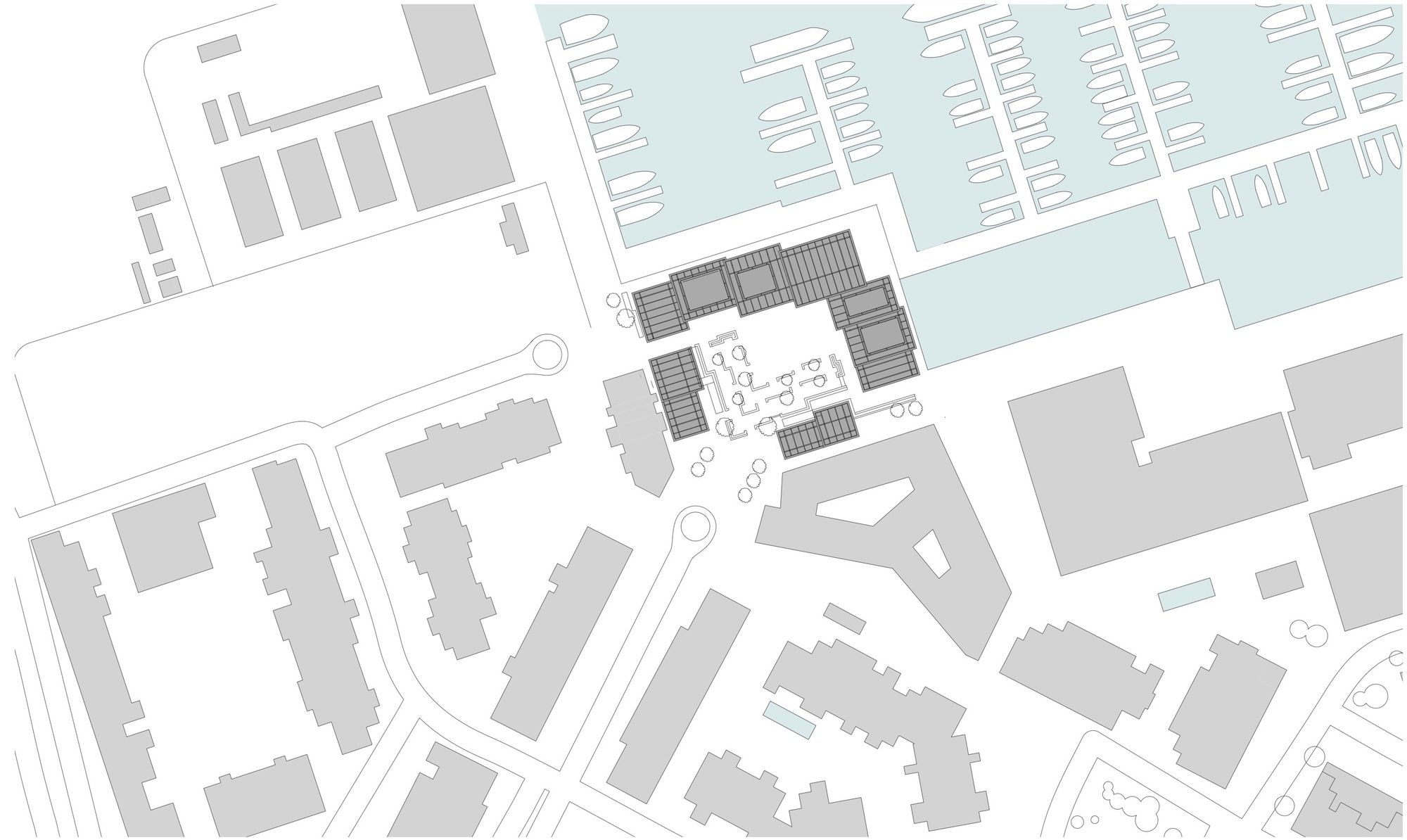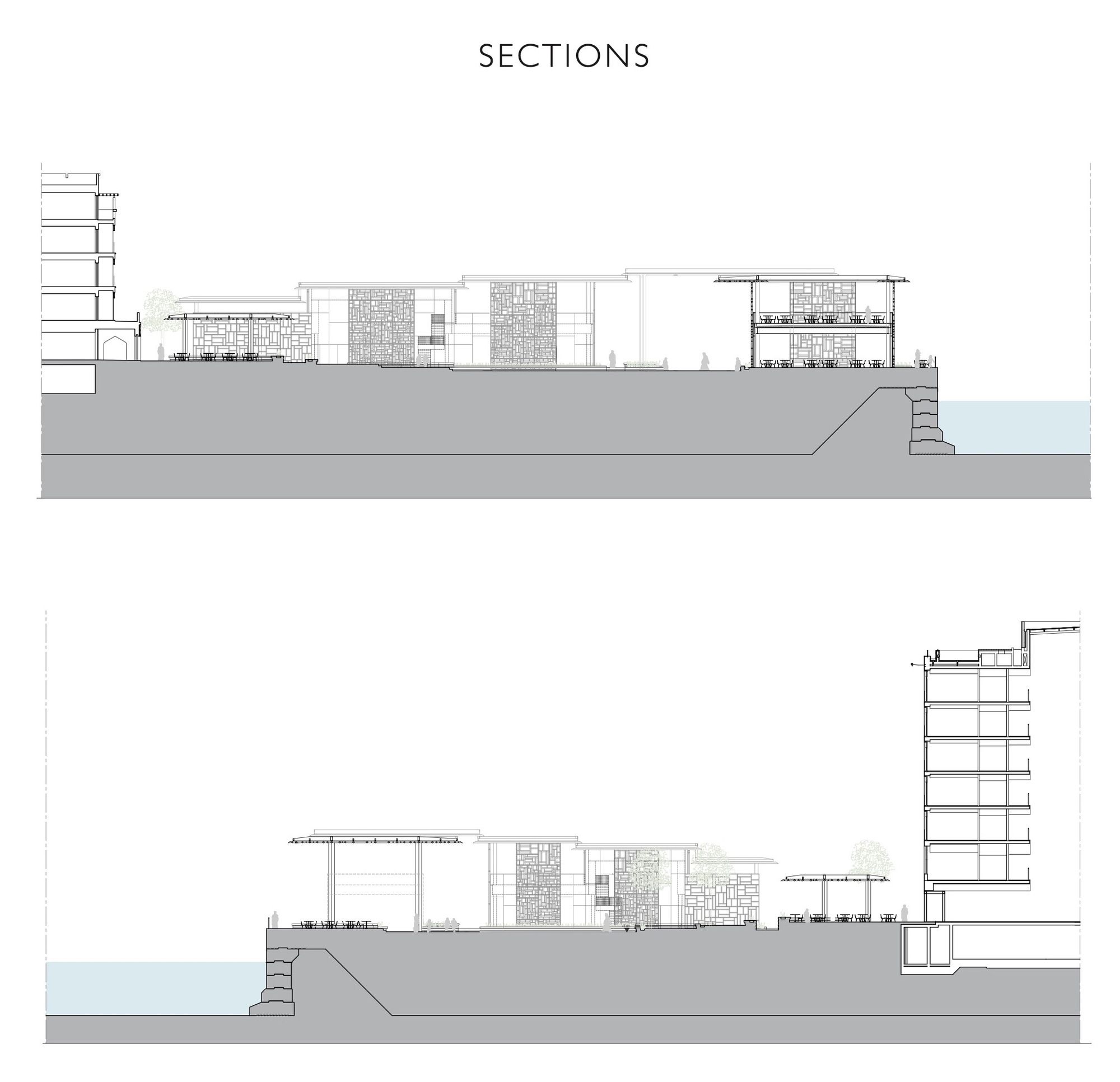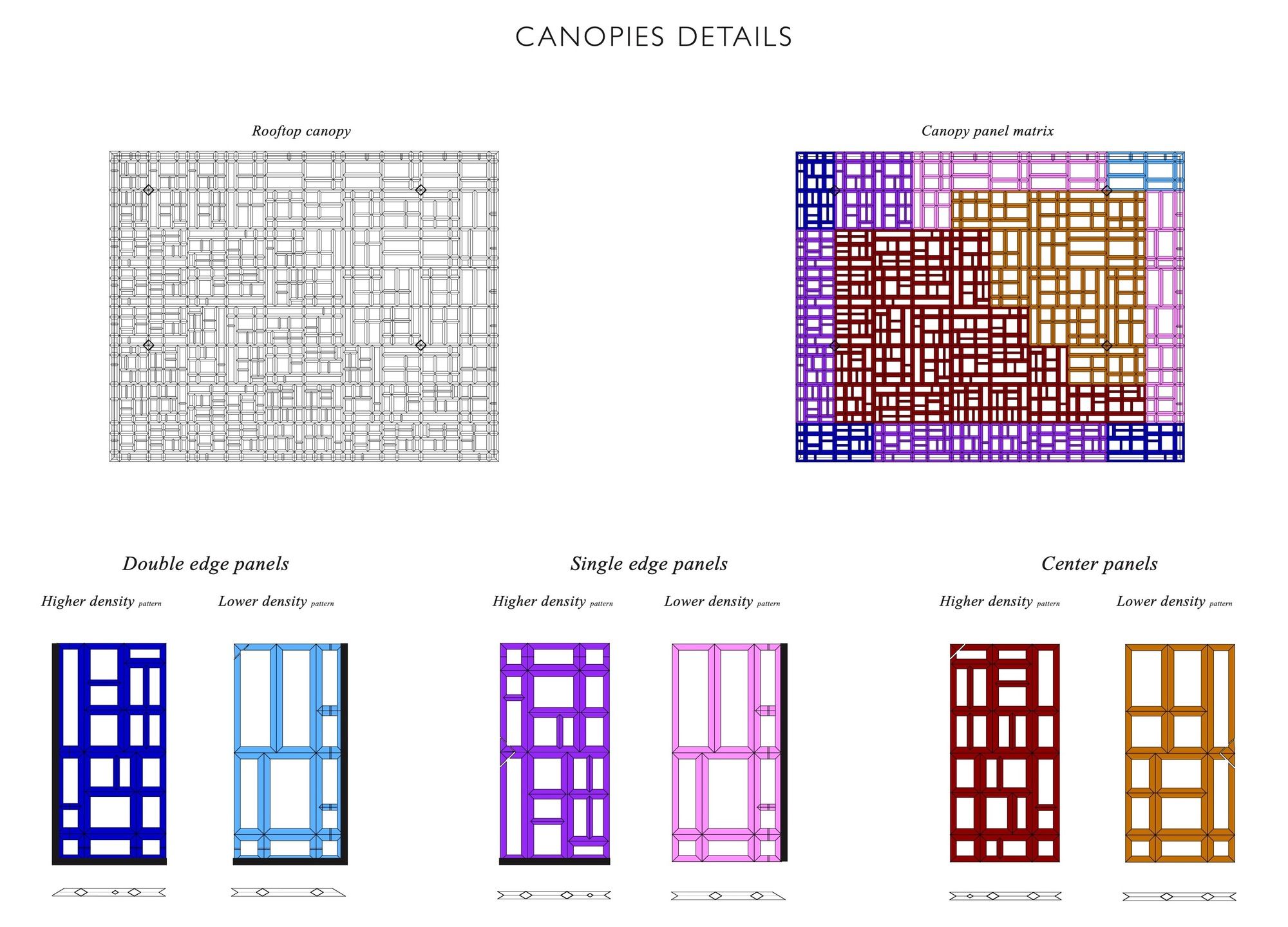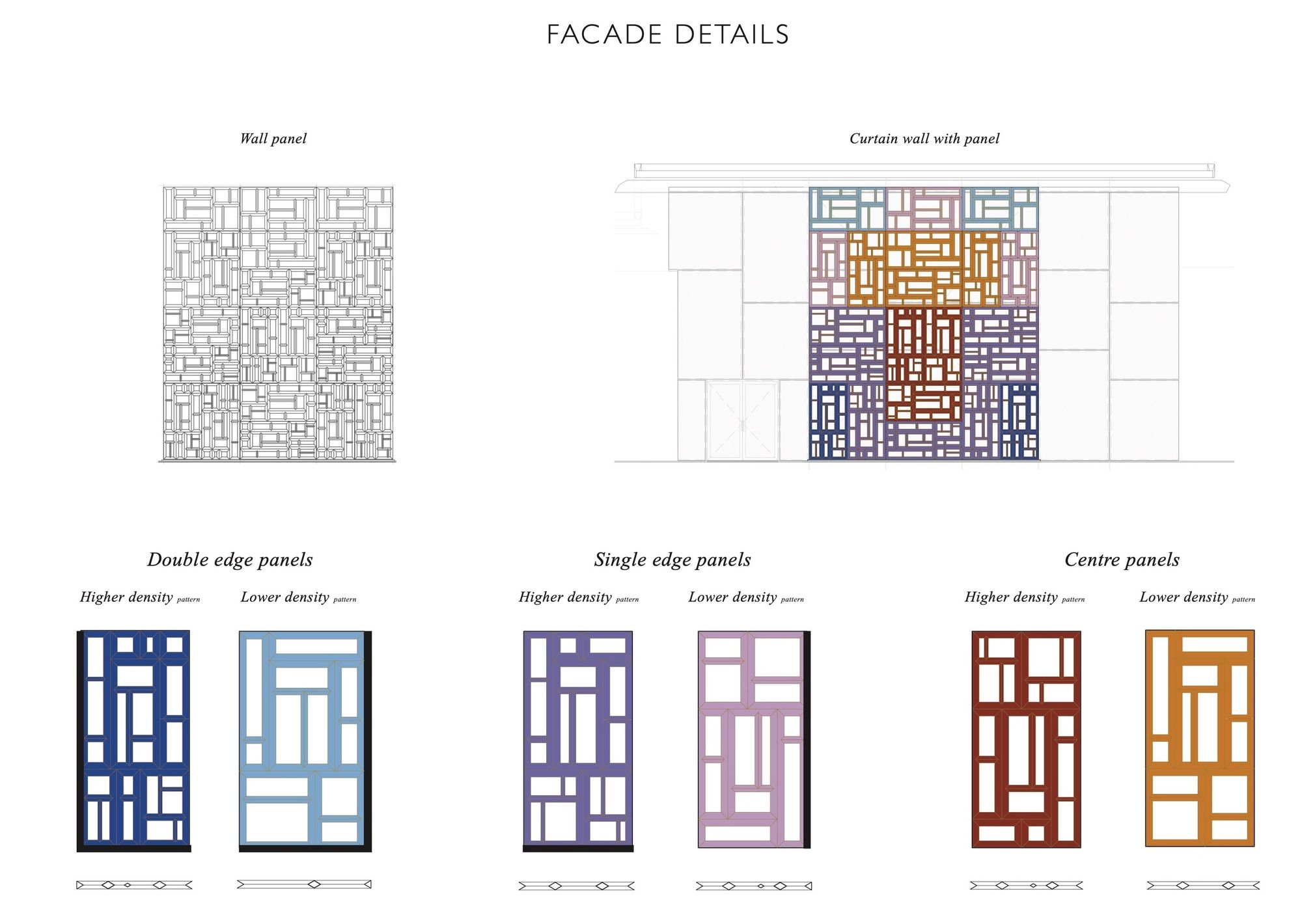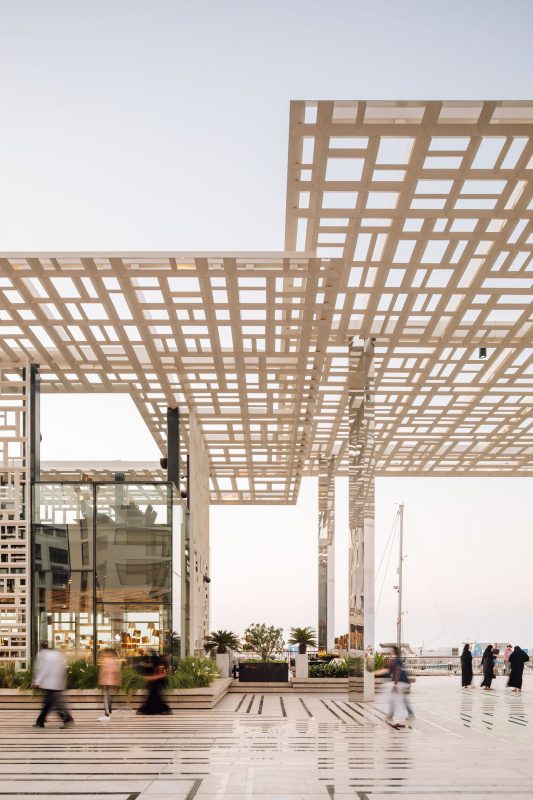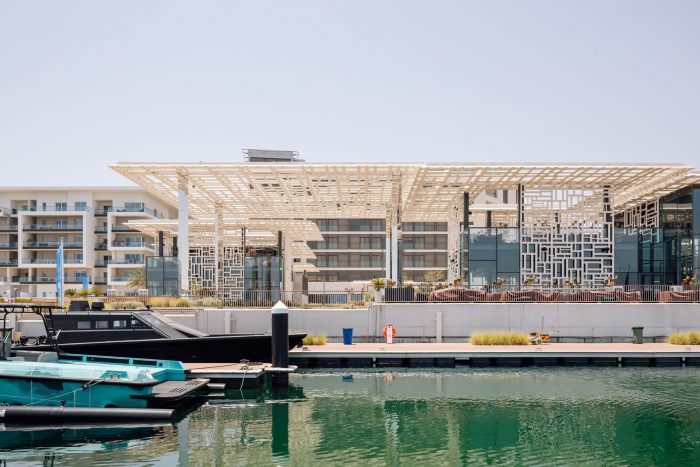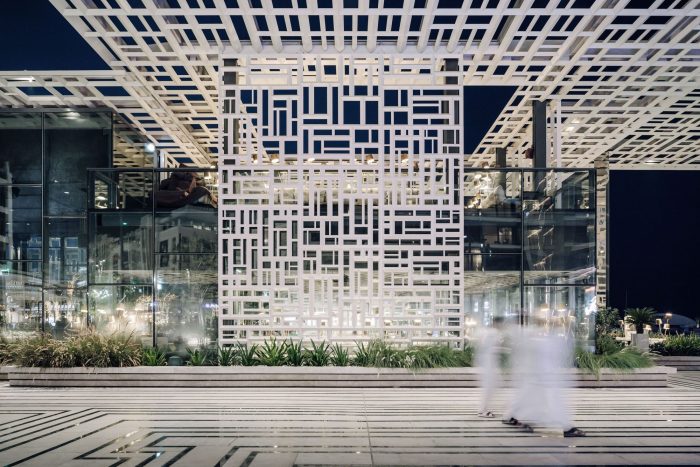Muscat’s Marsa Plaza
ACME has completed Marsa Plaza, Oman’s largest new urban square in a generation. Situated in the centre of Al Mouj Quarter, on the western edge of Muscat, Marsa Plaza creates a new urban space at the edge of the Marina. Opening out into the water and defined by steps and shading canopies, the square creates a number of informal spaces for water features and people-watching, seating terraces and an amphitheatre for performances. The ground plane of the square, the walls of the buildings and the shading canopies have all been designed as one to create a unified visual spatial identity and to blur the boundaries between the separate elements. The materiality and patterns have been developed from the local context, using local Omani stone and patterns developed from traditional geometries and vernacular types.
Muscat, Oman’s port capital, is tightly wedged between the Gulf of Oman and the Al Hajar mountain range at its back. Constrained in its urban development, the city continues to expand west along the shore, with several new city quarters under construction. Al Mouj is the largest of these new developments, defining a new urban quarter for Muscat. Marsa Plaza has been conceived as the heart of the Marina district, linking the main boulevard to the seafront promenade. It is intended to be not just an amenity for the local community, but a destination for the wider public of Muscat.
Protected from the intense sunlight by trees and overlapping canopies, the plaza invites people of all ages and creates a shaded environment for use during the heat of the day and in the evening. The screen patterns have been designed to maximise shading depending on screen angle and exposure, with variations in the grid to balance light and shade for each position. The levels of the square are stepped and ramped to bring the local city closer to the water’s edge and to form a natural amphitheatre around the central water feature. The geometry of the paving, canopies and mashrabiya wall plays with the tectonics and graphics of traditional Omani architecture.
The project is constructed from solid local stone- Desert Rose marble quarried in Oman. Steps in the square and joints are outlined in black granite to create the floor pattern, and locally-produced lightweight aluminium canopies and screens cover the outside seating areas. Two restaurants occupy the space behind some of the shading screens, and have been visually divided into three separate volumes: a double height glazed volume, a single storey volume with roof terrace and a stone-clad kitchens volume.
The shifting masses break up the scale of the buildings and create a variety of outdoor seating areas as well as allowing the cool sea breeze to flow into the square. The glazed facades are protected from the sun by screens and canopy overhangs that allow for a pleasant micro-climate inside and reduce the need for climate control. Roof canopies provide shading on all sides of the plaza. The canopies are lowest away from the sea, rising up towards the south-most corner where the largest one covers a performance area and frames views towards the water.
Project Info:
Architects: ACME
Location: Mascate, Oman
Area: 5500 m²
Project Year: 2019
Photographs: Francisco Nogueira
